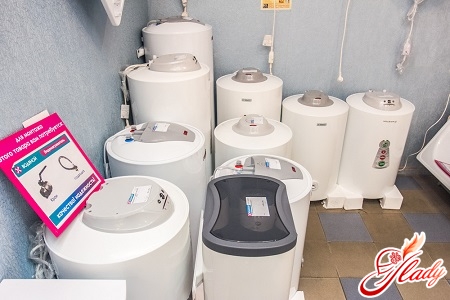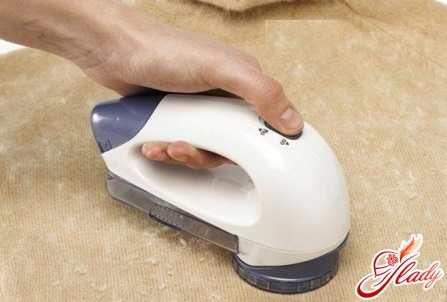 The ideal man should be in perfectironed shirt. But your man is perfect? Well, in any case, you certainly want to make it look like this (or something like that). So, you should follow his wardrobe (where are they without us, attentive!), Pants and shirts are washed and ironed. So if you do not have problems with the washing of the modern landlady (thanks to technical progress!), The process of ironing has not yet been automated, alas. Therefore this work remains one of the most labor-consuming and "time-consuming" ones. And when it comes to ironing men's shirts, it becomes clear that doing this is not the easiest, unless, of course, you know how to iron your men's shirts correctly. It turns out that without a certain skill, this is not easy at all. Therefore, if you read these lines, then, most likely, this skill has not yet been acquired and only are going to learn how to iron your men's shirts correctly. So let's right now and discuss this burning problem and we will not leave the slightest chance of folds, creases, tan marks and other troubles.
The ideal man should be in perfectironed shirt. But your man is perfect? Well, in any case, you certainly want to make it look like this (or something like that). So, you should follow his wardrobe (where are they without us, attentive!), Pants and shirts are washed and ironed. So if you do not have problems with the washing of the modern landlady (thanks to technical progress!), The process of ironing has not yet been automated, alas. Therefore this work remains one of the most labor-consuming and "time-consuming" ones. And when it comes to ironing men's shirts, it becomes clear that doing this is not the easiest, unless, of course, you know how to iron your men's shirts correctly. It turns out that without a certain skill, this is not easy at all. Therefore, if you read these lines, then, most likely, this skill has not yet been acquired and only are going to learn how to iron your men's shirts correctly. So let's right now and discuss this burning problem and we will not leave the slightest chance of folds, creases, tan marks and other troubles.
A few basic rules
How correctly to iron men's shirts? First of all, you need to adhere to the basic (golden) rules.
But you will agree that the knowledge of the basic rules forachieving an ideal result is not enough. But we are striving for an ideal? Therefore, you also need to prepare for this important process, so as not to be distracted by trifles. So, in addition to the working mood, there must also be a properly prepared workplace and tools.
Tools for an ideal result
What do we need for this? Naturally, the shirt itself (well, there should not be any problems with this), and then, with the help of which we will conduct it in a perfectly ironed state:
- an iron with non-stick coating, the possibility of temperature control and steaming mode (however, even the simplest and cheapest irons today meet these requirements);
- an ironing board on which to iron men's shirts is much more convenient than on a table covered with a towel or sheet (although in the second case the ideal is in principle achievable);
- ironing board for sleeves (if it is - well, if not - also it's not a problem, you can manage without it);
- an atomizer that will be needed if the iron does not have a steaming mode or for heavily over-dried fabric.
However, all of the above is an idealset for ironing not only men's shirts, but also any other clothes. But if you used to work a little differently (for example, without an ironing board or an atomizer), then it's okay. If you know how to iron your men's shirts correctly, that is the order of work, then the result will please you in any case. 
Operating procedure
Opinions on how to properly iron men'sshirts, diverge. Some landladies prefer to first iron the back, and others advise to start ironing with small parts. The first option is suitable, most likely, for very experienced housewives. But those who only master the ironing technique still it is better to try the second option. With a lack of experience, such an order of work will make it possible to achieve an almost perfect result without much difficulty. Because, starting to iron the shirt from the back, there is a risk to get an uncoated product at the end of the work, or, conversely, a shirt with smoothed folds and creases. Therefore, the order of work for an ideally ironed shirt is as follows: collar, sleeves, cuffs, back, shelves. It is this sequence that will allow you to stroke the man's shirt so as not to crumple the already ironed parts in the process of work. Let's consider each stage in detail. Collar. First, iron the wrong side of the collar. Do this, starting from the corners and going to the middle of the gate. Then turn the collar and just smooth it from the front (remember the rule about shirts made of dark and shiny fabrics!). In no case do not iron the collar over the fold! The result of such an oversight will be virtually impossible. Next, iron the sleeves. How to iron men's shirts with long sleeves? To start to smooth a long sleeve it is necessary from a cuff (a smaller detail). Cuffs are stroked like a collar: first from the underside, then from the face. If the cuff is double, then unfold it smooth without bends on both sides. Then add the cuff to the desired width (the hinges must match!) And then smooth over the fold. After the cuffs are ironed, iron the sleeve. Attention! The shooter on the sleeves should not be - it (oddly enough) is ugly! To iron the sleeve without arrows, we put it on the board and smooth it from the center to the edges. When we reach the edge, raise the sleeve, unfold and fold so that the edge is in the center. Again, ironing on the center and everything - the sleeve is smoothly ironed without any folds. The same procedure is repeated with the second sleeve. Back. This is the most "trouble-free" part of the shirt. To iron it easily and simply, like a sheet: you do not need to control the folds and buttons. The only condition for an ideally ironed back is well-ironed seams between the back and the shelves. According to the rules, the back of the man's shirt begins to be stroked from one side seam to the other (from right to left). First, smooth the seam, and then the back (up along the seam). Then the shirt is unfolded and the coquette and the middle of the back are stitched. After that, they unfold the shirt and stroke the second part of the coquette, again the middle of the back and the second seam. Shelves. We begin with a shelf with buttons. Carefully lay out this part of the shirt, stroke the coquette (if it is) and top. Moving the shirt, ironing the rest of the shelf (not forgetting about the places around the buttons). Also iron and the second shelf of the shirt. Strictly speaking, this is all. But if something seemed too complicated for you, try another option.
We iron the shirt from the back
How to iron the shirt properly, starting from the back? We comply with all the basic rules of smoothing the parts of the shirt, changing only the order of work. Undo all the buttons, lay out the shirt on the ironing surface and level it so that there are no wrinkles. Throwing the shelves aside, we begin to stroke the back of the back, then go to the sleeves, ironing the shelves and lastly ironing the collar. Another of the variants of the sequence of work: first - one of the sleeves, then the next shelf, back, second shelf, second sleeve, collar. Try all possible options and decide how to iron the shirt properly, so that not only correctly and effectively, but also convenient for you. We are all very individual even in how to wash or iron. The main thing is the result! And how to properly iron shirts for an excellent result - you decide. Some start to wish it from the back, others from the collar, third from the sleeves. Which option do you choose? And maybe you'll come up with your own way of perfect smoothing of men's shirts? Try it, because creativity is everywhere! And the ideal, well, in this case it is quite achievable. We advise you to read:








